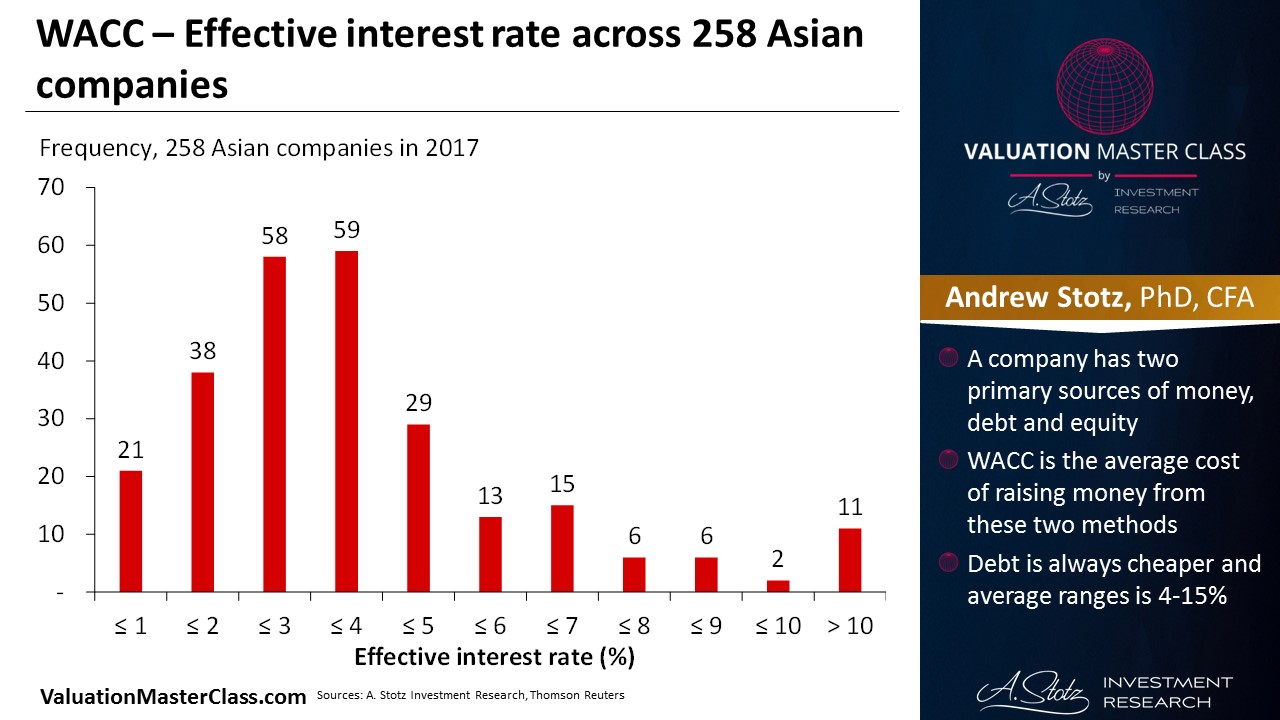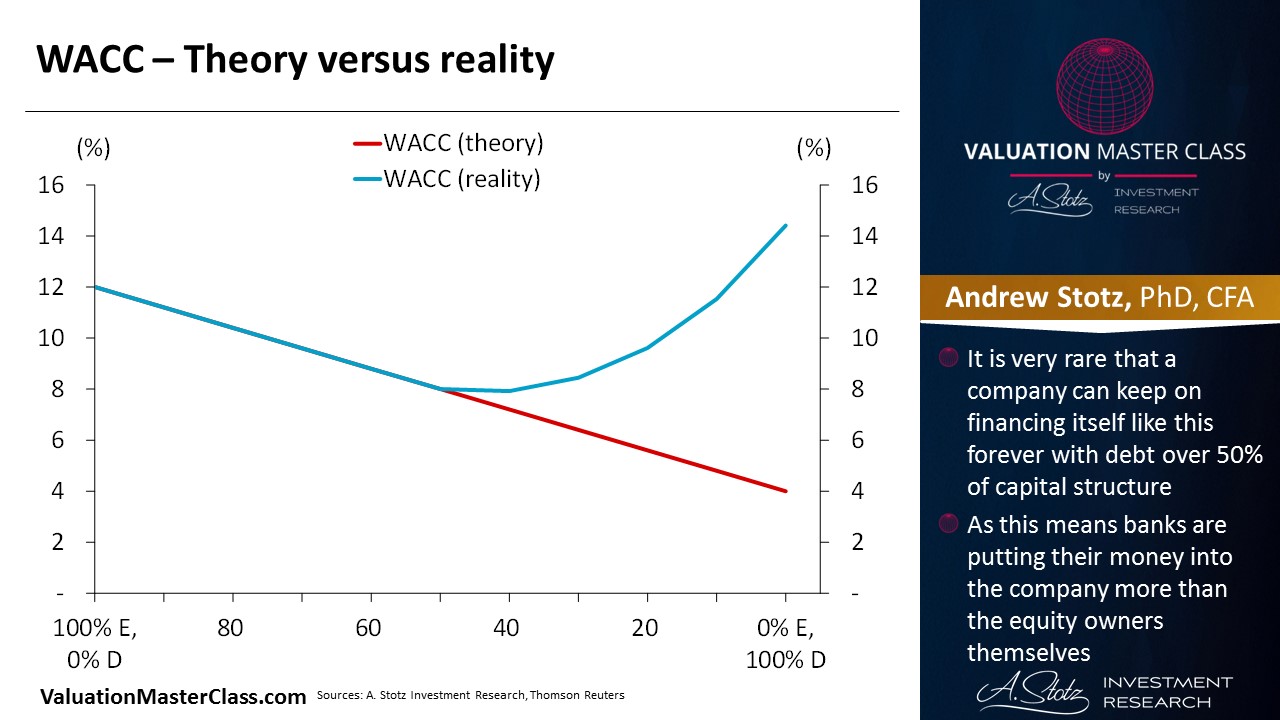WACC – Theory versus Reality
Since debt is cheaper than equity, in theory, this would mean that a company would prefer to be fully funded by debt to minimize its cost of capital. However, it’s not the case in reality that a company has a capital structure that is 100% debt. In this post, our main focus is on the cost of debt, to learn more about the cost of equity read this post.
Weighted average cost of capital (WACC) calculation
WACC = (E/V * COE) + (D/V) * COD * (1 – T)
Where,
E = Market value of equity
V = Total market value of equity and debt
COE = Cost of equity
D = Market value of debt
COD = Cost of debt
T = Corporate tax rate
WACC is what the company pay investors and creditors
The average rate of return that a company pays to all investors in the company. It is commonly referred to as the firm’s cost of capital. Investors include creditors, owners and other providers of capital.
A company has two primary sources of capital; debt and equity. WACC is the average cost of raising money from these two sources. The WACC is calculated taking into account the relative weights and costs of each.
What is Cost of debt (COD)?
The total amount of interest that a firm pays on all its debt. What lenders demand in compensation for the risk exposure they take lending to a company.
Since dividends are considered after taxes and they are part of the COE, then in the WACC calculation we adjust the interest, reducing it depending on the tax rate.
An optimal capital structure is the capital structure that lowers the WACC to its lowest. Usually when the company grows the debt grows as well.
Debt is always cheaper, an average range is 4-15%. Equity usually ranges from 8-20%.

It is very rare that a company can keep on financing itself like this forever with debt over 50% of capital structure.
As this means banks are putting their money into the company more than the equity owners themselves.

This can happen for a short period when the company is distressed but not over long periods.
The Valuation Master Class is an on-demand online course that trains attendees to become company valuation experts. Graduates can confidently value any company and possess the in-demand industry skills needed to succeed as investment bankers, asset managers, equity analysts, or value investors.
Click here to learn more about Valuation Master Class Foundation.
The Valuation Master Class Boot Camp presents the Valuation Master Class Foundation material in a 6-week guided online course format. Daily live sessions, teamwork, progress tracking, and the intensive nature help guide attendees to completion. The final company valuation project and presentation is tangible evidence of the attendee’s practical valuation experience and dedication to building a career in finance.